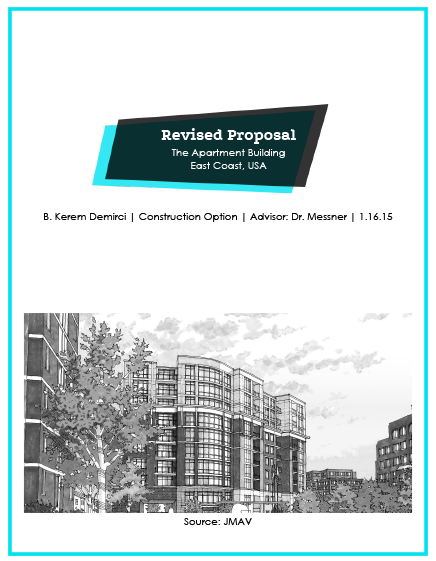Thesis Proposal


Analysis 1: Effects of Green Building on Marketability
The critical industry research for this course will focus on the effect of green building on the marketability of residential apartment buildings. This research will be accompanied by a survey of students and young professionals that would be likely tenants of the building, to determine their perceptions on green apartment buildings. The goal of this research is to determine if the marketability of The Apartment Building can be improved by altering the current LEED plan.
Analysis 2: Exterior Enclosure Acceleration
Analysis 2 looks into methods of accelerating the exterior enclosure that was behind schedule due to a harsh winter. In this analysis will focus on the use of prefabricated brick and masonry panels as opposed to the traditional stick-build system that is being used. An appropriate system will be designed and the cost and schedule impact will be analyzed. In addition a structural and mechanical breadth will be done on the new prefabricated enclosure. A structural analysis will determine if any changes will need to be done to the structure to support the panels and the interface between the panels and structure will be detailed. A mechanical analysis will be done to ensure the new building enclosure is not compromising mechanical performance.
Analysis 3: SIPS Implementation for Interior Fit-out
Due to the stringent schedule dictated by the phased turnover of the building, high level of quality and the repetitive nature of the apartment units, short interval production scheduling will be implemented for interior fit out. An implementation guide will be developed for best practices for SIPS for interior fit out. SIPS will then be implemented on The Apartment Building.
Analysis 4: Tools to Support SIPS Implementation
Building off the SIPS implementation and the BIM execution guide developed in Technical Report 3, Analysis 4 will look into potential BIM uses that can be used to support the implementation of SIPS on interior fit out. It is expected that the quality, predictability and management of the SIPS implementation can be benefitted by applying some BIM uses.
Structural Breadth: Load Analysis and Connection Detailing for Prefabricated Brick Panels
Building on Analysis 2, implementing prefabricated panels systems will have an impact on the structures. A structural analysis will have to be performed to ensure the load of the panels can be supported by the concrete structure. In addition, the interface between the prefabricated panels and the structure will be designed and detailed.
Mechanical Breadth: Mechanical Properties Analysis for Prefabricated Brick Panels
The building enclosure has a large impact on the mechanical system of the building. The prefabricated panel system designed in Analysis 2, will have to be analyzed to ensure the new building enclosure is not compromising mechanical performance.
MAE Requirements
Many of the analysis identified in this proposal will incorporate various tools and knowledge that has been obtained in the MAE courses at Penn State. Some of the MAE classes have already been completed while others will be taken concurrently in the spring. Below is a list of some of the courses and the relevant material from these courses that will be used various analysis.
AE 542: Building Enclosure Science and Design
This course will be taken in the spring. This course should provide good information regarding the new prefabricated panel system that is being proposed in Analysis 2. Relevant topics will include structural considerations, control considerations, and thermal property analysis.
AE 570: Production Management in Construction
Core concepts from this course such as production management tools, lean concepts and QFD decision making tools will be utilized in Analysis 1 and Analysis 3. Analysis 1, the apartment market demand evaluation will use the House of Quality to ensure decisions made take the owner and tenant requirements into account. In the SIPS Implementation Guide that will be developed as a part of Analysis 3, various production tracking tools will be identified and suggested to help monitor and control the SIPS process.